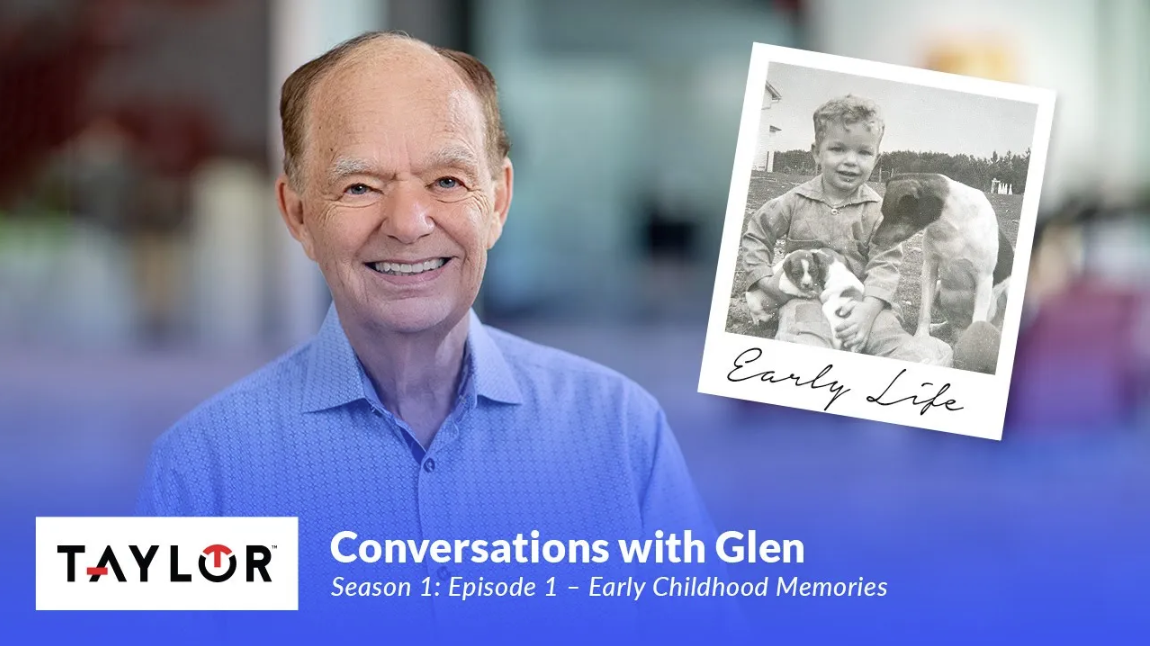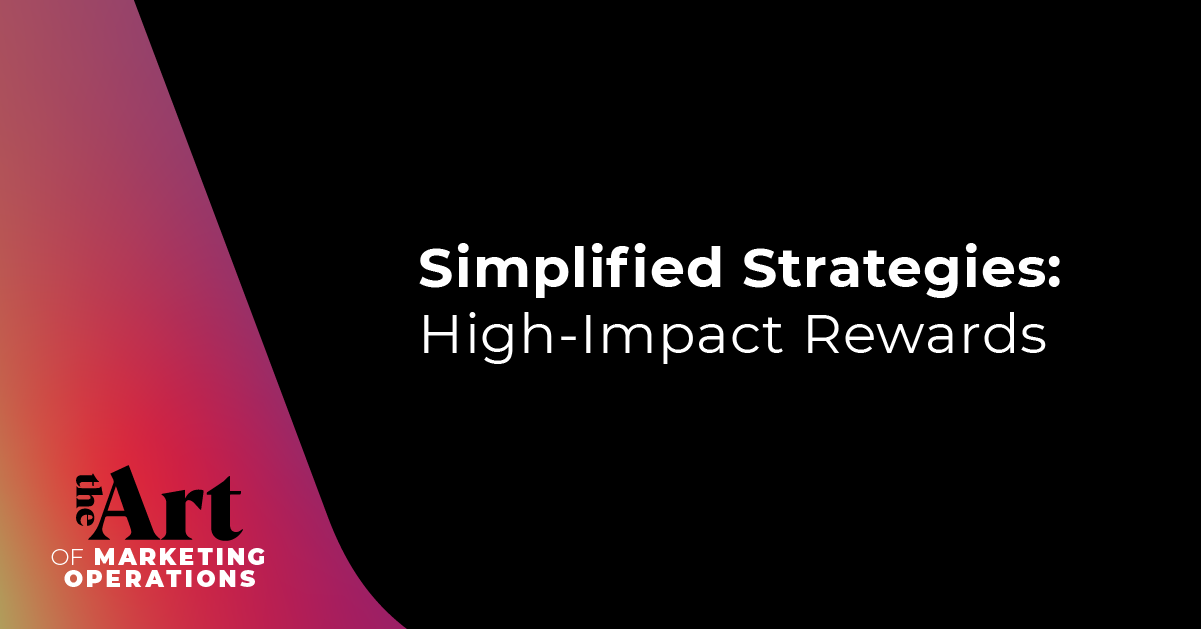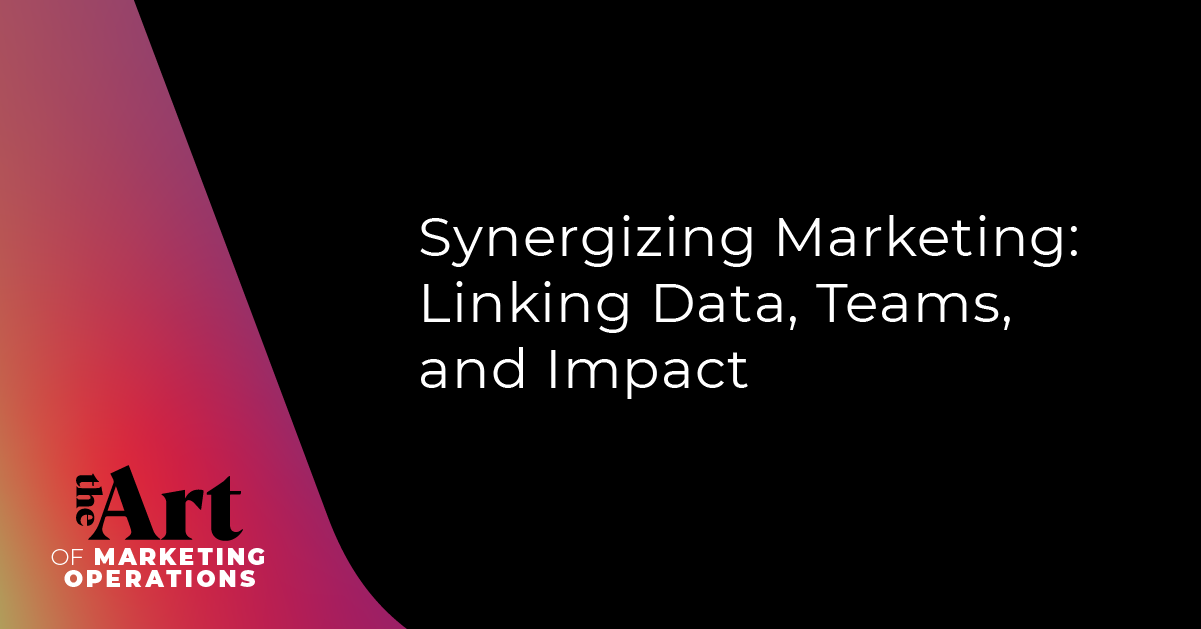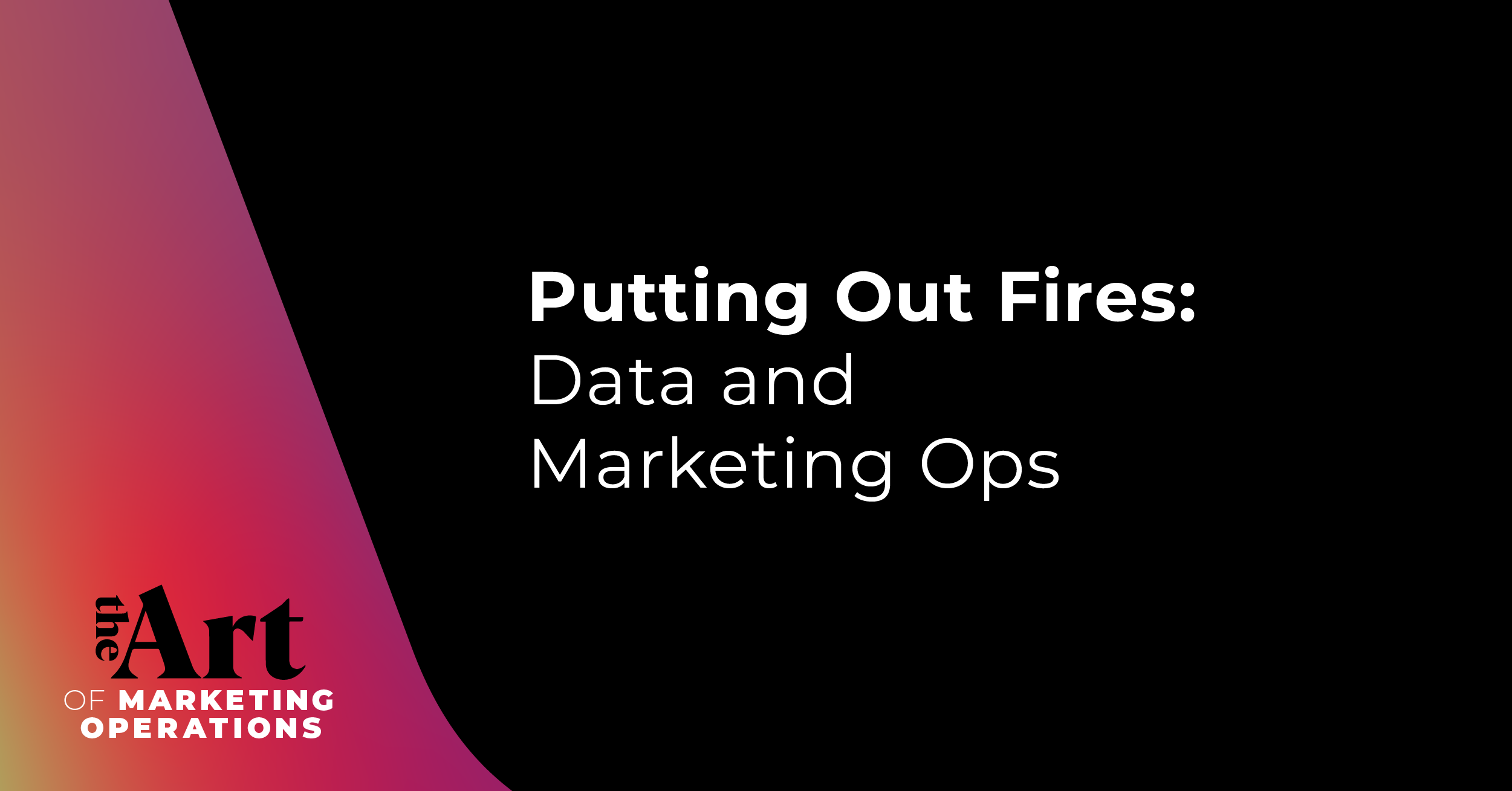An important part of the sales process that rarely gets brought to the marketing side is objection handling.
It’s the perfect opportunity to a) show sales that you’re willing to go the extra mile to collaborate and b) tell a story that will stick with customers forever.
In this episode, I interview Drew Smith, Director of Growth, Revenue Operations at Directive, about how marketing operations should collaborate with sales and revops.
Join us as we discuss:
- Why “show, don’t tell” always stays fresh
- What marketing can do to understand sales better
- The trifecta of sales operations, marketing operations, and revenue operations
- Collaborative problem solving across departments
Show, don't tell
A picture or a vision makes the story stick. It’s a classic but powerful tool of marketing.
Let's say I'm trying to tell you about the stages in a buyer's journey so you can start picturing it yourself. If I'm doing a good job telling you that story, you might put it together the way I'm describing it.
The problem arises, however, when you start to envision what I'm saying differently than the way I'm seeing it.
If I paint a picture for you instead of just telling you what this would look like, it would make it easier for you to see it accurately.
Visual expression also removes errors in translation or changes in the message as it moves along a string of people. With a visual, there's little room for error.
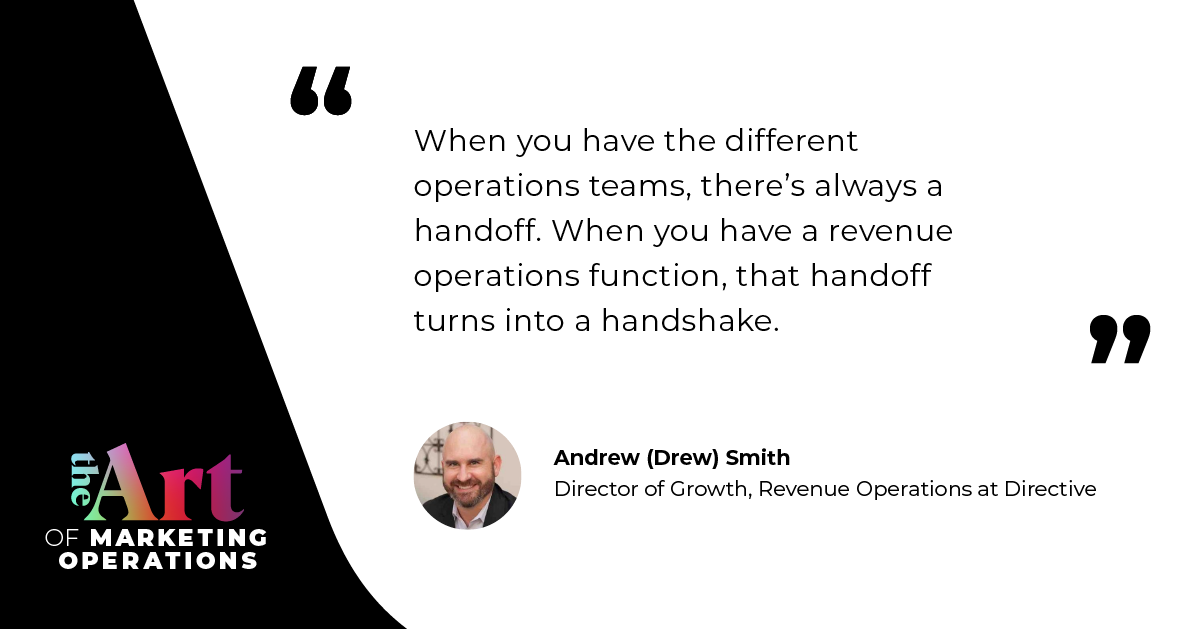
“When you have the different operations teams, there's always a handoff. When you have a revenue operations function, that handoff turns into a handshake.” — Drew Smith
Understanding sales
Research your buyers. Talk to them. Find out why they buy in the first place. Learn the challenges that your product or service helps solve for them.
This information is irreplaceable. You can't have enough of it. That's why marketers love it.
But…
The marketing mindset is research-based and talks to existing customers.
Salespeople, by contrast, live on the frontline. They understand why people say "no" to the product. They know the objections and the reasons the marketing message fails.
Why marketers must ride along with sellers
Do you really want to understand your customer?
Go for a ride along with the sales rep for a day. Maybe you just park a chair next to their desk and watch them on Zoom, or perhaps you actually get in a car and hit the road. Pay attention to what they do.
You'll see what takes a sales professional away from selling — and as a result, away from the single activity that produces revenue for them.
The more marketers can understand sales, the better response they're going to get from the sales team.
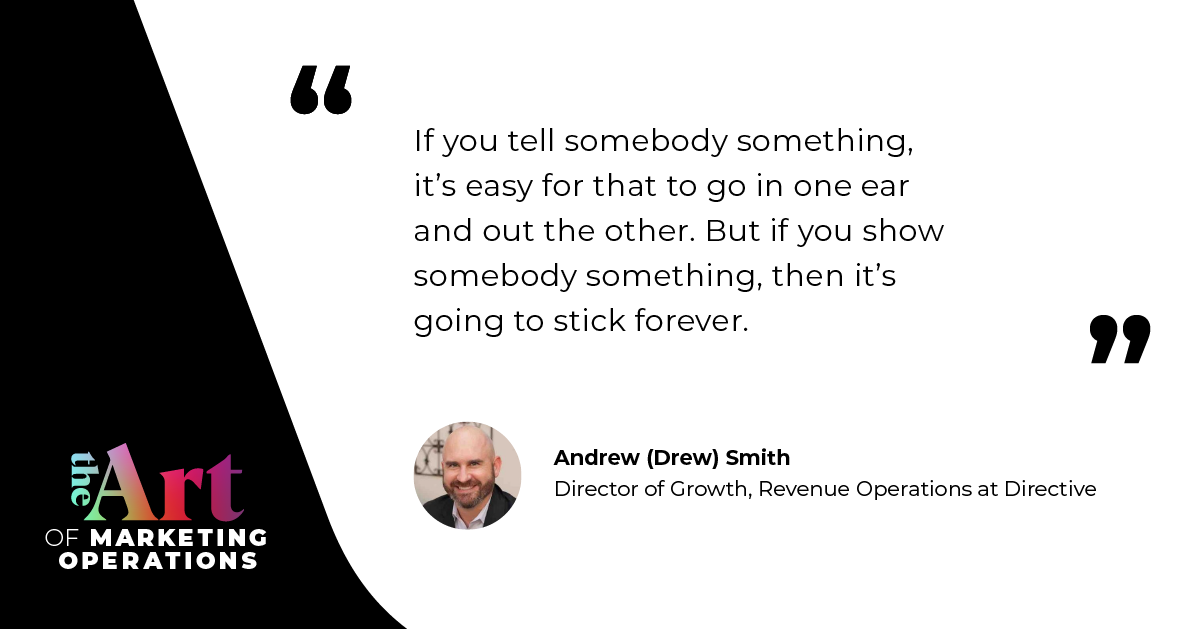
“If you tell somebody something, it's easy for that to go in one ear and out the other. But if you show somebody something, then it's going to stick forever.” — Drew Smith
Sales operations, marketing operations, & revenue operations
This trifecta of teams shouldn't operate independently, but they often do.
If that's the case at your organization, the first thing to do is document the current buyer journey. Make a special note of the different handoff points. This journey should become an elaborate chart when you're done.
Once you build out that chart, you'll start to see the failure points and the friction points. The omissions and issues are pretty glaring once they're documented.
Next, go through a series of interviews with each individual team separately. Without the other teams on the phone, people can be candid. With that information, you can build out a findings document
A clear picture will start to emerge, and you'll begin to realize where things have gone awry. That can hurt. It's like hearing, "Your baby's ugly." No one wants to hear that!
But if your baby's ugly and you want it to look better, then you need to have hard conversations so you can fix the problems.
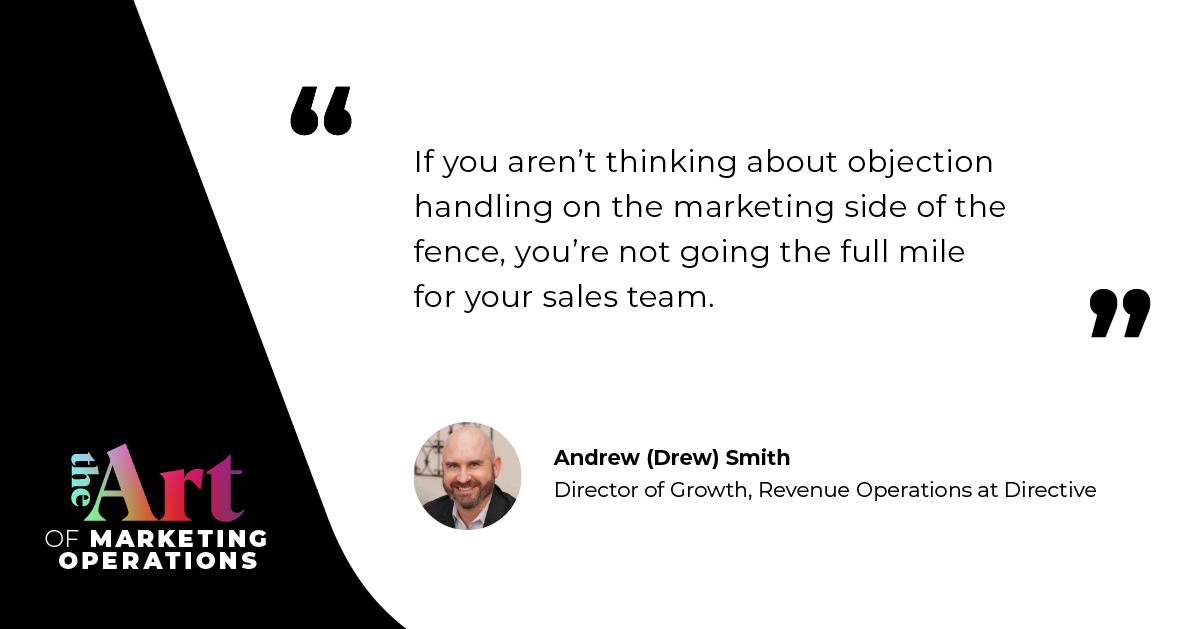
“If you aren't thinking about objection handling on the marketing side of the fence, you're not going the full mile for your sales team.” — Drew Smith
The B2B buyer mindset in 3 steps
1 - Product comparisons
B2B buyers want product comparisons to be easy… like, Amazon-level easy.
You can compare Best Buy to Amazon in your living room. Why can't you do the same with a B2B product?
2 - Frictionless process
Find the friction points in your process and just get rid of them.
A quick word on friction: B2B buyers don’t want a burdensome sales process.
They can see TVs at Best Buy and buy them on Amazon. There's a lesson in that for B2B marketers who pay attention.
3 - Positive impressions
The customer should feel good about their purchase at the end of the buying process.
If you have a burdensome process… that is, if a customer has to spill blood, sweat and tears (sometimes literally) to buy from you…then you need to streamline your process.
You need to make it easy for the buyer.
Reach out to this episode’s guest: Andrew (Drew) Smith, Director of Growth, Revenue Operations at Directive.



